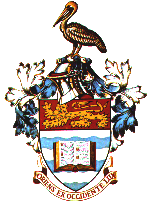![]()
![]()
![]()
![]()
![]()

![]()
![]()
![]()
![]()
![]()
Gardner et al: Chapter 11
Snustad et al: Chapter 14
Consider a situation in which mutation induction has been used to provide a collection of mutant strains or spontaneous mutants have been isolated - whatever mechanism or system has been employed a collection of mutants on which genetic analysis and perhaps map the genes involved can be performed has been isolated. It would save time if we knew which mutants were mutant in the same gene and which were mutant in different genes as this would reduce the number genetical crosses which are subsequently performed.
For example, suppose 10 mutant strains of an organism which affect the same phenotype, e.g. a requirement for arginine, have been isolated. What we need to know is whether these 10 auxotrophic strains are mutant in the same or different gene(s) in the arginine biosynthetic pathway. The way to test this is by using pairwise combinations of the mutants and observing which of the mutants can complement each other to produce growth on minimal medium. This is a complementation test and the design of such tests depends on the genetical systems available for the organism and on the kind of mutation studied. For example, if the organism was A. nidulans, diploids could be created from pairs of arg auxotrophs (controlling the same phenotype) and observe if the diploids could grow in the absence of externally supplied arginine.
The principle behind the complementation test is that two homologous genomes carrying mutations controlling the same phenotype are combined within the same cell and observed to determine whether complementation occurs. If complementation occurs, then the mutations are in different genes and are non-allelic; if complementation does not occur, then the mutations are in the same gene and are allelic.
Consider a situation where genome 1 is mutant in gene A and genome 2 is mutant in gene B but both mutations lead to arginine auxotrophy. If these two genomes come to reside within the same cell, then genome 1 will produce a mutant gene A product or no gene product, but will produce a normal gene B product. Similarly, genome 2 will produce a normal gene A product, but a mutant gene B product or no gene product. Then the combination of genome 1 and genome 2 in the same cell, will produce a normal gene A product and a normal gene B product, so the combination should grow in the absence of arginine. These two mutation s are said to complement each other and it is inferred that the two mutations lie within different genes and are therefore non-allelic.
If genome 1 and genome 2 were both mutant in gene B, though not necessarily at the same site in gene B, then in the complementation test there would be normal gene A product but no gene B product. Thus the association would not be able to grow in the absence of arginine and it would be inferred that the two mutations under test were within the same gene and therefore allelic.
So you could perform pairwise complementation tests between the 10 arginine mutants to determine which were allelic and which were not. You may find, for example, that 8 of the mutants were allelic and that the remaining two were non-allelic to the eight but allelic with each other. This would mean that there were 2 complementation groups: one with 8 allelic members and the other with 2 allelic members. In order to map the two gene loci then, only two crosses would be performed which would be a lot less work than setting up ten crosses and finding that eight of them gave the same result.
An example of complementation in humans is albinism caused by recessive genes at two loci.
The cis-trans test is effectively a complementation test and was used by Brenner in the late 1950s. He had isolated thousands of rapid lysis (r) mutants of phage T4 and set out to classify these mutants.
This is used as a control. If two mutations are on the same piece of DNA, i.e. on the same chromosome, they are in the cis configuration. A wild type chromosome would be able to complement these two mutations if they are in the same or different gene(s).
In practice, one would construct cis-heterozygotes for each pair of mutations and the heterozygotes should have the wild type phenotype.
If the two mutations are on different pieces of DNA, i.e. on different chromosomes, this is the trans configuration and these chromosomes will only complement each other if the mutations are in different genes.
To do this test, one would construct trans-heterozygotes for each pair of mutations. If the mutations are non-allelic (in different genes) the phenotype of the heterozygote will be wild type. If the phenotype is mutant, then the mutations are in the same gene and therefore allelic.
The cis test must produce the wild type phenotype for the trans test to be valid. This means that dominant or codominant mutations cannot be analysed by this means as both trans heterozygotes would be mutant. So the mutations analysed must be completely recessive to the wild type.
The cis-trans test provides an operational definition of the gene as the unit of function - the unit controlling the synthesis of one polypeptide (diffusible gene product). The test cannot be used where the gene produce is non diffusible or where the mutation is in a binding site for proteins or in a promoter.
Benzer used the cis-trans test to analyse his r mutants of T4 and found that they fell into two complementation groups A and B and therefore only two genes were involved. Benzer gave the name cistron (derived from cis-trans) to the groups, so he had cistron A and cistron B. Subsequently, the term cistron has been used as a synonym for gene in situations where the gene product has been defined biochemically.
This template created by the Web Diner.